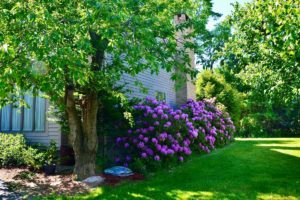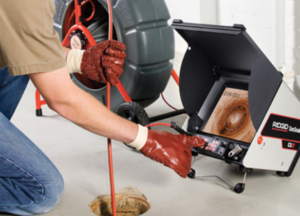 Just when you thought you had seen the end of your plumbing problems, plant life adds a whole new obstacle to your maintenance regimen. When shooting for aesthetics, many homeowners overlook the repercussions certain trees and shrubs can have on plumbing fixtures.
Just when you thought you had seen the end of your plumbing problems, plant life adds a whole new obstacle to your maintenance regimen. When shooting for aesthetics, many homeowners overlook the repercussions certain trees and shrubs can have on plumbing fixtures.
While new plants may be beautiful, they could jeopardize your septic and plumbing systems. When enhancing your lawn’s appeal with shrubs and trees, it’s vital to know where and how different plants should be grown to avoid a plumbing emergency.
Types of Trees That Can Affect Plumbing Fixtures
Trees add beauty, personality, and shade to your yard. Unfortunately, their roots present a significant threat to your plumbing fixtures. Depending on the type and direction of the root’s growth, you may experience blockage in your pipes. Here are the trees that most frequently grow into plumbing lines and fixtures:
- Birch trees are favored by homeowners who appreciate graceful, slender trees. Birch roots usually grow a 4- to 8-inch-thick mat-like structure, but they still present a threat to nearby pipes. Birch trees need no less than twenty feet of space between plumbing fixtures and your home’s foundation to ensure no damage is done.
- Citrus trees are a tasty source of lemons, oranges, and more. Although these trees yield wonderful fruits, they’re infamous for their damage to plumbing fixtures and are banned by many HOA’s for this reason. When planting a citrus tree, the placement must be at least 6-8 feet from the foundation of your home to avoid damage.
- Oak trees are notorious for their longevity and strength, though they’re also infamous for damaging foundations and plumbing fixtures. Because oak trees grow slowly, they can penetrate pipes at a sneaky pace that takes a while to notice. Oak trees should be planted a minimum of 15-30 feet away from important fixtures on your property.
Preventive Growth Barriers
There are many methods you can use to protect yourself from expensive plumbing repairs, and one of the most cost-effective options is to have a preventive growth barrier installed.
A preventive growth barrier is an assemblage of walls implanted into the ground around a plant that’s main job is to redirect the growth of roots. A professional landscaper can help install a growth barrier to make it easier to plant a yard without root-related complications.
Experts In Plumbing Repair
Putting up with the complications of plant-related plumbing damages is no thrilling endeavor. If you’ve done your calculations and a plant’s roots still managed to come in contact with your pipes, it’s best to turn to the experts at D&F Plumbing, Heating and Cooling. Here at D&F Plumbing, Heating and Cooling, we make it our top priority to repair your plumbing and protect your plumbing fixtures from any additional damage. If you require immediate plumbing repair, don’t hesitate to contact us today!




